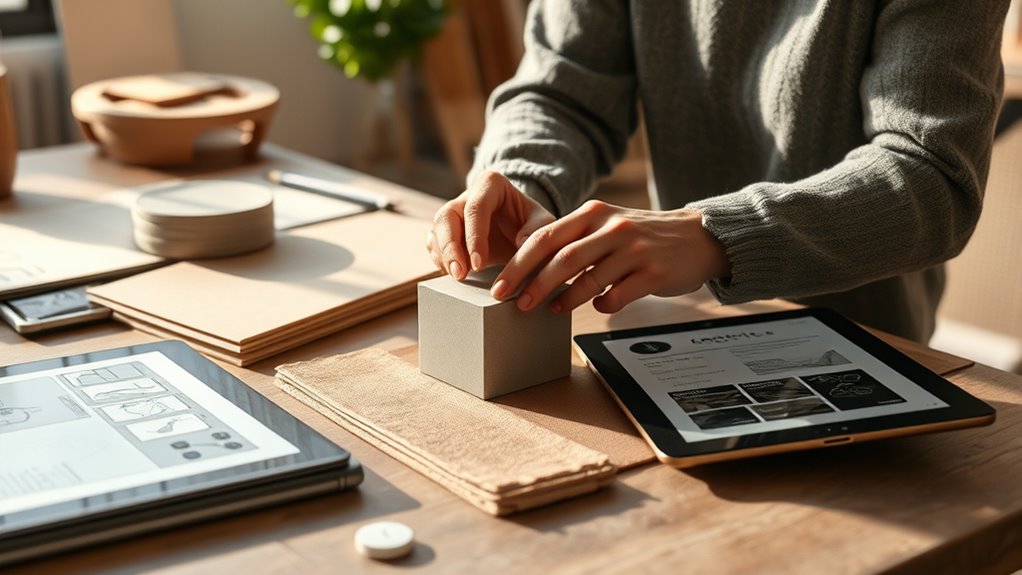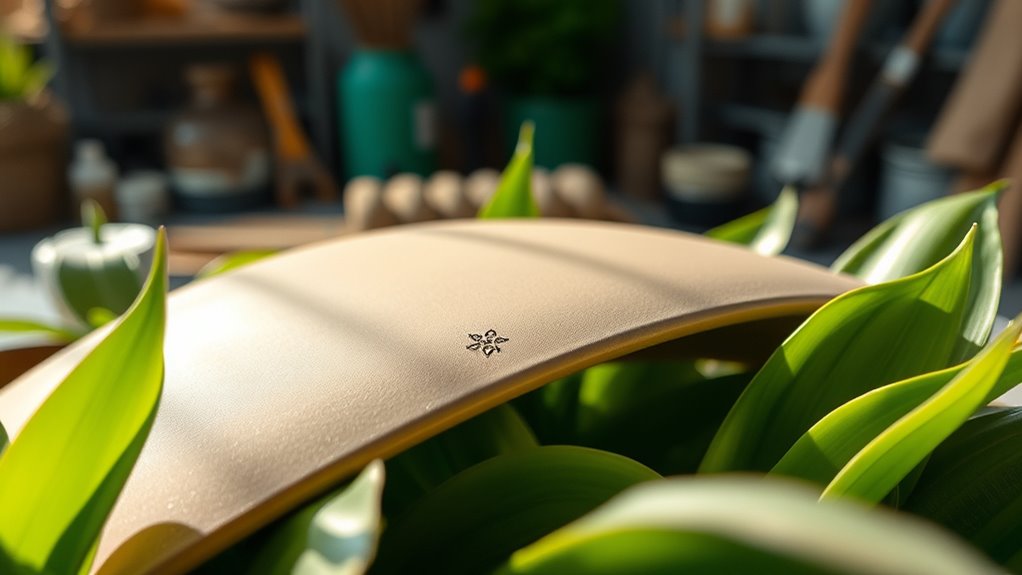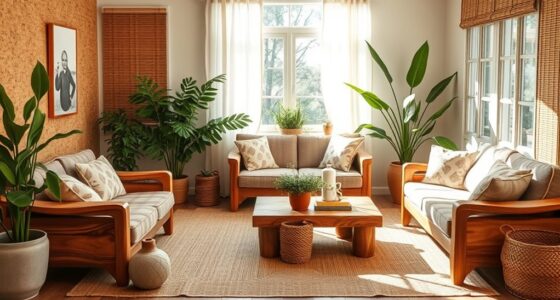In circular economy product design, you focus on creating zero-waste solutions by making products that are easy to disassemble, reuse, and recycle. Choose sustainable and recyclable materials, and design for durability and reparability to extend product life. Incorporate strategies that keep materials in use, avoiding landfill waste. By embracing these principles, you’ll develop more sustainable products that benefit both the environment and your bottom line. Keep exploring how to turn these ideas into impactful designs.
Key Takeaways
- Design products for easy disassembly to facilitate recycling, reuse, and repurposing at end-of-life.
- Incorporate recyclable and biodegradable materials to support closed-loop material cycling.
- Create durable, repairable products to extend lifespan and reduce waste generation.
- Implement modular designs that allow components to be upgraded or replaced, minimizing disposal.
- Foster a circular economy by integrating recycling infrastructure and promoting material re-entry into production.

Have you ever wondered how product design can minimize waste and promote sustainability? It’s a vital question in today’s world, where resource depletion and environmental concerns are more urgent than ever. One effective approach is to incorporate recycling strategies directly into the design process, ensuring that products can be easily disassembled, reused, or repurposed at the end of their life cycle. By planning for recyclability from the start, you’re not just creating a product that serves its purpose but also one that contributes to a circular economy. This involves selecting materials that are widely recyclable and designing components that can be separated without damaging their value. Recycling strategies help close the loop, reducing the need for virgin materials and cutting down on waste sent to landfills. Additionally, implementing recycling infrastructure within the manufacturing process can streamline end-of-life management for products.
Sustainable materials play a fundamental role in this process. When you choose eco-friendly, renewable, or biodegradable materials, you’re setting the foundation for a more sustainable product. For instance, opting for biodegradable plastics or recycled content minimizes environmental impact, especially if these materials can be incorporated into recycling strategies later on. It’s about thinking long-term rather than just focusing on the immediate function. Using sustainable materials also often means reducing the energy required for production, which further lowers the carbon footprint of your product. You might consider materials like bamboo, recycled metals, or bioplastics, which are known for their lower environmental impact and compatibility with recycling processes. Incorporating life cycle assessment can help optimize the environmental benefits of your material choices.
Designing for a circular economy also involves considering the durability and reparability of products. When you create items that last longer and can be easily repaired, you extend their usable life and reduce the frequency of replacement. This, combined with sustainable materials and effective recycling strategies, creates a product that fits seamlessly into a zero-waste system. It’s about shifting your mindset from creating disposable items to designing solutions that can be reintroduced into the supply chain repeatedly. Moreover, understanding the importance of growing and harvesting chia seeds can inspire designers to incorporate natural, resilient, and adaptable materials into their products, further supporting sustainability goals. Additionally, designing for disassembly makes it easier to recycle and repurpose components at the end of the product’s life.
Ultimately, your goal should be to think of your product as part of a larger system — one where materials are continuously cycled back into use. By prioritizing recycling strategies and sustainable materials in your design process, you move closer to zero waste. This not only benefits the environment but also offers economic advantages by reducing raw material costs and fostering innovation. When you embrace these principles, you’re not just designing a product—you’re helping to shape a more sustainable future.
Frequently Asked Questions
How Can Small Startups Implement Circular Design Principles Effectively?
You can implement circular design principles by starting with sustainable sourcing, choosing eco-friendly materials, and designing for durability. Conduct a lifecycle assessment to identify improvement areas and minimize waste. Collaborate with suppliers committed to sustainability, and design products for easy disassembly and reuse. Educate your team on circular economy practices, and continuously refine your processes. Small startups can make a significant impact by integrating these principles into every stage of product development.
What Are the Most Common Challenges Faced in Adopting Circular Economy Models?
Ever notice how supply chain complexities and material sourcing issues often trip you up? When adopting circular economy models, these challenges are common, making it tough to maintain sustainable flows. You might struggle to find reliable sources or face delays, which hampers your efforts to create zero-waste products. Overcoming these obstacles requires adaptable planning and strong supplier relationships, helping you turn challenges into opportunities for more sustainable, circular designs.
How Do Consumer Behaviors Influence the Success of Zero-Waste Products?
Your consumer awareness and purchasing habits play a vital role in the success of zero-waste products. When you actively choose eco-friendly options and prioritize sustainability, you support brands committed to circular economy principles. Your willingness to reduce waste, recycle, and buy responsibly influences market demand, encouraging companies to innovate and create more zero-waste solutions. Ultimately, your behavior can drive positive change and help establish a more sustainable future.
Are There Specific Industries More Suitable for Circular Product Design?
While some industries naturally lend themselves to sustainable practices, electronics manufacturing and the fashion industry stand out as particularly suitable for circular product design. You’ll find that electronics, with their rapid innovation cycles, benefit from modular, recyclable components. Similarly, the fashion industry, with its focus on trends, can embrace zero-waste design and recycling. Both sectors offer great opportunities for creating innovative, eco-friendly products that appeal to conscious consumers.
What Role Do Government Policies Play in Promoting Circular Economy Practices?
Government policies play a pivotal role in promoting circular economy practices by implementing regulatory incentives and establishing policy frameworks. These measures encourage businesses to adopt sustainable methods, reduce waste, and innovate in product design. When you support policies that prioritize circularity, you help create a market environment where zero-waste products thrive, leading to long-term environmental and economic benefits. Your engagement can drive the shift toward a more sustainable future.
Conclusion
By embracing the circular economy, you become the architect of a sustainable future, weaving innovation into every product you design. Imagine your creations as seeds that grow and flourish without leaving waste behind, turning the cycle of consumption into a never-ending dance of renewal. With each zero-waste product, you’re not just making a difference—you’re rewriting the story of how we live, creating a world where waste is a forgotten chapter and endless possibilities bloom.










